
Hybrid SUP
HB96
Instruction & Owner’s Manual
For video instructions visit SeaEagle.com/Instructions
or scan the QR code to the right!
Sea Eagle Boats Inc.
19 N. Columbia Street, Suite 1
Port Jefferson, NY 11777
1-800-748-8066
July 2016
VIDEO
INSTRUCTIONS
scan this code
or visit
http://sea.gl/vilb

1
Sea Eagle Warranty
All Sea Eagle products come standard with a
3 year warranty against manufacturing defects
The warranty begins the date that your product
is delivered. Sea Eagle must inspect equipment
in order to determine if there is a defect. In the
event that an item must be shipped back to us,
Sea Eagle will only reimburse the standard return
shipping charge through FedEx, UPS, or U.S.P.S.
at published shipping rates. Fees charged by re-
tail shipping outlets, like The UPS Store, will not
be reimbursed and you are responsible for han-
dling and packing charges.
Sea Eagle will refuse delivery on packages
without a valid return authorization number and
will not be responsible for shipping or handling
charges. To obtain a return authorization num-
ber, please contact Sea Eagle directly, unless you
purchased from an authorized dealer/reseller in
which case contact them for more information.
If you receive a damaged item, please call the
shipping carrier to report the issue. Do not return
damaged merchandise until it has been inspected
by the carrier. Sea Eagle will be notied by the
carrier when they have completed their inspection
and if necessary, Sea Eagle will arrange for the
repair or replacement of damaged merchandise.
See complete warranty details at SeaEagle.com/
Warranty.
Decals, Stickers & Registration
Always contact your state boating authorities for informa-
tion on boating registration and regulations. Most states
require you to register your boat if you are using a motor.*
Upon registration it may be required to provide the Manu-
facturer’s Statement of Origin.
Purchases made through an authorized dealer or reseller
may require for you to contact them directly in order to ob-
tain this. You may be charged your own state sales tax if
you were not charged sales tax at the time of purchase.
Registered boats generally require for the registration
number to be applied to the boat. We do not recommend
the use of decals or stickers as they tend to crack and peel
over time with the repeated inflation and deflation of your
Sea Eagle.
Instead we suggest applying these numbers to a small
piece of hard plastic or marine plywood and hanging it from
your boat like a license plate if permitted by your state.
Another method is to apply the numbers to the hull using
either PVC based paint or permanent marker.
* The Sea Eagle Hybrid SUP is not rated for use with a motor.
Safety
In a manual of this type it is impossible to give adequate
space to the topic of water safety. For further information
on boating safety, visit USCGBoating.org or enroll in one of
the excellent water safety courses provided.
It is your responsibility to be aware of and comply with all
relevant safety regulations. For all water recreation or sport
you should have a reasonable swimming ability. Just as
swimmers have a cardinal rule about not swimming alone,
it is strongly advised that you should never go boating
alone. As a safety reminder, each Sea Eagle hull has a list
of suggestions printed on it for you to follow that we call
Boating Safety Basics.
Boating Safety Tips
• Always wear a USCG approved PFD (life vest) at all times
while on the water.
• Be aware of your local boating rules and regulations and
abide by them accordingly.
• Check inflation levels each time before you go out and
inflate your boat for a full 24 hours before undertaking long
trips.
• DO NOT allow children to use Sea Eagle unsupervised.
• DO NOT consume alcohol while boating or operating a
boat while under the influence of alcohol or drugs.
• DO NOT drag your Sea Eagle over rocks or gravel if it
can be avoided.
• DO NOT exceed the certified maximum capacities of this
boat under any circumstance.
• DO NOT go boating alone.
• DO NOT use compressors, CO
2
or compressed air for in-
flation, only use Sea Eagle recommended pumps.
• DO NOT use your Sea Eagle Boat as a personal flotation
device as they are not rated for that use.
• DO NOT sleep inside of your Sea Eagle while on the
water.
Congratulations on purchasing a Sea Eagle!
With over 45 years of experience in designing, selling and using these
quality inflatables, we’re confident that you are going to love your Sea
Eagle and we’re ready to proudly stand behind them.

2
Safety
Safety Equipment
The type of water conditions you are on should determine
the type of safety equipment that you should have on
board. For all types of boating we strongly recommend
that every passenger wear a USCG approved PFD
(personal flotation device) like a life vest. In most places
this is a requirement by law, but from our point of view it
is also an exercise of good judgment to have a PFD for all
passengers
Important Safety Items
Drinking Water & Snacks: Kayaking is a physical activity
that can work up both a thirst and a sweat and especially
on a hot or warm day it is a good idea to have drinking
water readily available to you to prevent dehydration.
Bring a good amount of water for all passengers.
Extra Clothes/Layers: You never know when the weather
can change and it’s a good idea to come prepared with
extra clothing. If you have a dry (waterproof) bag than we
recommend storing them inside so they’re not damp in
case of emergency.
First Aid-Kit: The contents of the kit may vary depending
upon your preferences, but make sure to carry a kit that
reflects the possible dangers for the conditions you are in.
Manual Pump/Repair Kit: Although our boats are both
durable and rugged, it may be possible that you need to
make a repair while on the water in which case you’ll need
the repair kit and a manual pump to re-inflate the boat.
If this is your first repair, you may also want to bring this
instruction manual with you.
Sun/Rain Protection: A hat can protect both your face
and head from the rain or sun. You may also want to carry
sunscreen with you as both the sun and the sun’s reflec-
tion from the water can do serious damage to your skin. If
you are out for prolonged periods of time you may need to
reapply sunscreen as needed.
Whistle: Having a whistle readily available to you in case
of emergency is a great way to attract the attention of
others if assistance is needed.
Always tell someone where you are going to be boating
and what time you plan to return. Keep a cell phone in a
waterproof container that will float if it falls in the water.
The Basics: Stand Up Paddling
There are a few basic things you should consider before
venturing out in your Sea Eagle SUP. Visit us online at
Youtube.com/SeaEagleBoats for tips and the latest
videos.
If you are not an experienced stand up paddler, we suggest
that you start in calm shallow flat water and practice for an
hour or two before paddling out into deeper water. We also
recommend that you do so when the water temperature is
comfortable for swimming. Do not be discouraged if you fall
in a few times. Standup Paddling is much like water skiing,
it takes some practice and experience to be proficient.
Give it some time and don’t give up. This is a wonderful
experience and pastime once you get used to it.
When getting on the board, have your SUP paddle already
in your hand and make sure you are in deep enough water
(1’ or more) so the skeg doesn’t scrape the bottom.
Center your foot on the board and stand up bringing your
other foot up onto to the board one or two feet in front of
your other foot. Once you are standing, move your feet
(one at a time) further to sides, one a little bit in front of the
other.
Use your SUP paddle for balance, switching it side to
side as needed. It is a good idea to get used to moving
your feet forward and backward, always using your SUP
paddle to counter balance your weight. As soon as you are
comfortable, start paddling forward keeping most of your
weight in the center of the board.
As you paddle forward, switching your paddle from one
side to another, experiment paddling with longer and
shorter strokes. Please note, you can paddle two strokes or
more on one side if you have sufficient momentum. As the
board turns to the other side, switch your paddle to correct.
The Basics: Sit Down Paddling
Before starting make sure that you have installed the
deluxe inflatable seat on the SUP and its properly attached
(as directed in this manual). The sit down position is ideal
for using our optional foot rest as you’ll paddle better and
faster if you have a secure foot brace to push your feet
against. For sit down paddling use the AB-30 kayak paddle.
Open Waters, Waves & Ocean Surf
Once you become proficient in paddling shallow water,
you can expand your practice into deeper waters. When
you feel comfortable with paddling on flat water in different
wave conditions, you can consider paddling in ocean surf.
Again, we think you should go out on calm day to start. Try
to pick a day with small waves that you can practice in. As
you become used to smaller ocean waves, then try larger
waves. Some knowledge of surfing and swimming in the
ocean is very important.
These instructions are not sufficient to going into detailed
surfing lessons. We suggest you go online and read up on
surfing, if you do not have ocean surfing experience. There
are many good surfing courses offered locally throughout
the country that you might consider.

3
Bay, Lake & Ocean Paddling
The Sea Eagle Hybrid SUP can be used on lakes,
bays and oceans. One thing you might notice if you are
accustomed to hard hull kayaks or canoes is the natural
yaw (side to side motion). The two small skegs and the
large center skeg prevent most of the yaw. The way you
paddle can prevent most of the rest of the yaw.
Big Paddling Tip: When you begin to paddle, start slowly,
building speed with each stroke to control the natural yaw
further and allow you to paddle straighter and faster.
Sit Down Ocean Surfing: The Sea Eagle Hybrid SUP is
a great pleasure on the ocean. If you’re not familiar with
the ocean should, you should take appropriate care, and
always paddle within range of a lifeguard station.
Surfing Tips: Warm-Up
Always perform some warm-up stretches before entering
the surf. This will reduce the risk of muscle injury or cramp
while you’re surfing.
Awareness
Make sure you’re in safe waters. Like surfing or
snowboarding and skateboarding, stand up paddlers
sometimes fall when they are still beginners. Don’t pass
over any rocks or underwater debris shallow enough to
hurt you if you go over. If you plan a long trip, consult a
navigational chart to be sure that your path is clear of reefs,
wrecks, rocks or other debris.
Wind Awareness
When standup paddling in windy conditions, a paddler’s
body will function as a sail. Paddling downwind is easy,
but paddling upwind can be challenging. Make sure you’re
comfortable in light winds before venturing out on a windy
day. Be aware of the forecast as winds can change unex-
pectedly while on the water.
Comfort Zone/Fitness/Food
You should only surf in waves that you are comfortable in.
NEVER go into waves rougher than you can handle.
NEVER lose sight of the oncoming waves.
NEVER exhaust yourself in the ocean.
It’s always better to end the day early and safe than to push
your luck when you’re tired. Make sure you’re physically fit
when surfing, you’ll need to be able to swim back to shore if
you lose your board at the end of an exhausting session. It
is also a good idea not to go surfing until 45 minutes after a
meal, the same as you would for swimming.
Practice
The best way to become a better at anything is practice,
practice, practice. If you want to improve your abilities than
you need to be in the water surfing as regularly as possible.
Priority
Always make sure that you are not taking anyone else’s
wave. Remember, the surfer who is closest to the breaking
wave has priority. If you see someone already on a wave
then the wave is taken and you’ll have to wait for the next
one.
When To Hold/When To Throw
HOLD onto your board when paddling out. You’ll get out
back to the line up more quickly and you won’t put anyone
paddling out behind you at risk. THROW your board if you
are about to wipe out. You are far more likely to sustain
an injury if you and your board are getting washed around
together.
The Buddy System
Bring a friend! Having a swimming or surfing buddy is
a fundamental principle that shouldn’t be ignored. Even
though the Sea Eagle Hybrid SUP is designed for solo use,
we recommend going out with at least one other person
while on the water. Not only do we believe you will have
more fun sharing this experience, we believe its a good
idea to have someone with you in case you need help and
the same for your friend if they need help.
Rips & Currents
A rip is a strong undercurrent in the ocean. You can
recognize rip currents by looking for a channel of churning
or choppy water, an area where the water is distinctly a
different color, a line of foam, seaweed or debris heading
out to sea or a break in the wave pattern. According to the
NWS (National Weather Service) wearing polarized sun
glasses makes it easier to see the signs of a rip current.
Escaping A Rip Current
If you are caught in a rip remain calm and conserve energy
as you’ll need it to swim back to safety. You may not realize
you are in a rip current until you are suddenly further away
from the shore than you realized.
It is important that you DO NOT SWIM TOWARD THE
SHORE. Swimming towards the shore is like swimming
upstream in a river and will tire you out before long. Instead
what you should do is swim parallel to the shore in order to
escape the rip current.
Once you feel that you’re out of the current, turn towards
the shore. If you cannot swim out of the rip current, calmly
float or tread water until you are out of the current.
Exhaustion is your biggest enemy, don’t fight a rip current.
When you are out, swim toward shore.

4
Recessed Air Valves
A recessed one-way
air valve is featured on
the Sea Eagle Hybrid
SUP for inflation.
Attach the hose to
the pump by twist-
ing the black “cap”
onto the ribbed
port of the hand
pump.
Remove the caps,
press and turn the valve
stems counterclockwise
so that the stem is in
the UP position. When
the stems are in the up
position the valve will
retain air.
Hand Pump
This T-handle pump can
easily reach the working
pressure for the Hybrid
SUP. The pump comes
with a manometer
(pressure gauge) and a
hose.
The attached
recessed valve
adapter is compatible
with the recessed
air valve on all Sea
Eagle iSUPs.
WARNINGS: Keep
out of the reach of
children, Don’t leave
running unattended.
Do not use inflater
for more than 20
minutes continuously
as this can cause
overheating and
damage.
The carry bag has
compartments for the
pump, battery hose.
Protect the inflater from
sand by keeping it in
the bag provided, if
sand gets in the inflater
it could get JAMMED.
BTP Turbo & BP12
Electric Pumps
(OPTIONAL)
These electric pumps
comes with a nylon
shoulder carry bag,
12V DC power supply,
hose and adapters.
Hybrid SUP | INFLATION: Valves & Pumps

5
Included are a cluster
of adapters, with raised
numbers on each arm
of the cluster. The
adapter marked #1
is the only adapter
needed to inflate your
Sea Eagle.
Take adapter num-
ber #1 and firmly
push it into the grey
tube in the end of
the hose. Make sure
that the adapter is
fully seated on the
tube by pushing it
until the end of the
tube pushes past
the raised ring in the
adapter.
Connect the other end
of the hose to the red
inflation port at the top
of the pump, located
near the ON and OFF
buttons.
ATTENTION: Never
turn the dial when
the device is under
pressure as this will
immediately cause
the instrument to
break.
Connect the quick
connector at the end
of the power cord into
the quick connector
attached to the pump.
Hybrid SUP | INFLATION: Valves & Pumps
Adjust the pressure
dial to read between
12 and 15 PSI, the
operating pressure of
your Sea Eagle. PSI
is marked in red on
the dial.
To connect the pump
to a 12V battery, use
the cord with alligator
clips at the end of
the extension cord.
Connect the red clip to
the positive pole and
the black clip to the
negative pole.
WARNING: Always
connect red clip to
the positive pole and
the black clip to the
negative pole. Cross
connecting wires
could damage both
the pump and boat.

6
The portable battery is
optional, if you ordered
it, connect the battery
to the quick connector
on the pump.
To charge the portable
battery, plug it into
the charger and then
plug the charger into
a household electrical
outlet.
Press the ON button
to begin inflation. The
pump operates in two
stages which can be
identified by the noise
of the turbine at the
start, followed by the
piston.
The pump
automatically stops
once the pressure is
reached.
Warning:
Air compressors that
are designed for other
uses, like tire ination
(usually around 32 PSI)
can easily harm your
Sea Eagle which works
at a much lower pres-
sure of 1 PSI. For this
reason we recommend
only using Sea Eagle
pumps.
Hybrid SUP | INFLATION: Valves & Pumps
The light on the battery
charger will blink red
until fully charged.
When it is fully charged
the light will be a solid
green.
Locate a relatively
clean area that is free
of sharp objects.
Unpack from the bag
and lay it out flat.

7
SeaEagle.com/Instructions
When ready to inflate,
insert the adapter into
the valve, turn it to
the right until it is fully
seated and then begin
inflation.
*Valve stem should be
in the up position.
The pressure gauge
will not begin to register
until the board begins
to get pressurized.
Pump until the working
pressure of between 12
and 15 PSI is reached.
Do not exceed 15 PSI
when inflating.
Skegs
Three skegs are
included with the board.
Any combination of
skegs can be used
inserted into the bases
on the underside of the
board.
Slide the skeg into the
base and secure with
the clip. If a skeg will
not slide into its base,
do not force it. Refer
to instructions page
11. The bases have
strings attached so the
skegs can be tied to the
board.
Stand Up Paddle
This three-part paddle
has a T-handle, shaft
and blade. Insert the
blade into the shaft
and align the hole
with the button to lock
in place. Insert the
T-handle and adjust
to the desired length
using the locking nut.
Carbon Fiber SUP
(OPTIONAL)
This three-part paddle
has a carbon fiber
T-handle, shaft and
blade section. Insert
blade into the shaft
and align the hole with
button.
Insert the T-handle and
adjust to the desired
height. Lock with the
thumb lock.
Paddle Pocket
The paddle pocket at
the front of the foot
pad. Insert the blade
when carrying the
board or walking into
the surf.
Deluxe Kayak Seat
(OPTIONAL)
The Deluxe Kayak
Seat (DKS) has two
internal bladders, two
white one-way valves
and two blue straps
with clips for securing
the seat to the D-rings
onto the EVA foam
Diamond Deck Pad.

8
SeaEagle.com/Instructions
One-Way Air Valve
(Found only on DKS)
Tether the valve cap
onto the base of the
seat by stretching the
retainer ring with your
fingers to fit over the
groove in the base.
Stretch the ring if it is
too tight.
An A41 Large
Bellows Foot Pump
is included with the
Deluxe Package to
inflate the DKS seat.
Use the wide, flat
adapter to inflate the
seat.
Insert the wide, flat
adapter into the
valve and inflate the
chambers.
Kayak Paddle
(OPTIONAL)
The asymmetrical
spoon blade design
of this kayak paddle
will allow for a smooth
entry and an even pull,
maximizing the power
from each stroke. They
will also require less
gripping force.
Put the shaft together
first. Insert the shaft
piece with the button
into the piece with three
holes. Lock the button
in the middle hole.
Next, slide the drip
guards up the shaft to
about an inch above
the button hole. Insert
the blades into the shaft
and adjust until the
button locks the blade
in place.
The additional holes
in the shaft are for
“feathering” the blades.
Blades can be offset
45° from each other.
This makes paddling
into a stiff breeze easier
as the blade that is
not in the water will be
able to slice through
the wind with little
resistance.

9
Hybrid SUP | DEFLATION
To deflate, push down
on the center valve
stem and quarter turn
it to the right. The stem
will stay in the down
position, allowing
the air to escape. Be
sure that your eyes
and your face are not
directly over the valve.
Fold the back end of
the board over to reveal
the skegs. Unclip and
slide the skegs out of
their bases.
Fold the board back on
itself between the skeg
bases.
Begin folding the
board toward the bow.
Fold until the board fits
in the carry bag.
Backpack Carry Bag
Next store the folded
board inside the carry
bag. If you’ve taken
your time and folded
tightly, you should
have plenty of room
for a paddle (broken
down), seat, pumps
and other small items.
STORAGE
In extremely cold temperatures, PVC material becomes
brittle. You can still safely store your Sea Eagle in these
conditions, so long as you avoid dropping it and so long
as you do not subject it to any sudden impacts. Although
you can store your boat fully inflated, you may wish to
store your Sea Eagle rolled up inside of the bag.
If you’re planning to leave your Sea Eagle outside, be
sure to keep it raised up off of the ground. Its also a good
idea to keep it covered so that it is not directly exposed
to berries, leaves, rain, sunlight and other elements. Sea
Eagles that are left in water will most likely have to be
emptied from time to time.
Make sure that your boat and accessories are dry before
storing to remove moisture that could cause mildew.
Choose a cool, dry spot when storing in an enclosed area
like basement, closet or garage.
Rodent proof the storage area. Mice, squirrels and other
small rodents can do a lot of damage to your Sea Eagle.
Avoid excessive heat when storing your board. Do not
store Sea Eagle in an attic or metal shed.

10
ATTENTION: If the Sea Eagle is losing air, this does not
necessarily mean a hole is present.
For instance, a boat that is inflated late in the day with 90°
air may cool 20° overnight. The cooler air will exert less
pressure on the hull and the boat will appear softer the
next morning.
When there has been no variation in temperature and air is
still being lost, it is time to start looking for the leak.
Step #1. LOOK
Visually inspect the boat from a few feet away and if
necessary, flip it over and closely check the outside. Any
large leaks when the boat looses a considerable amount of
air should be clearly visible.
Step #2. TIGHTEN
Be sure to check the tightness of the one-way recessed
valves as well and if necessary, tighten them with the valve
wrench included in the repair kit canister.
Step #3. LISTEN
If you have a rough idea of where your leak is but can’t see
it, you may want to try listening for it as you may be able to
hear the air escaping and pinpoint the leak.
Step #4. Soap & Water
Inflate the boat to full pressure. Mix a couple of table-
spoons of dishwashing liquid in a bucket of water. Spread
the soapy water on the leaking chamber with a large
sponge or hand towel. The leak may produce bubbles or
make whistling or sputtering noises. Often, spray bottles
don’t work.
Even though Sea Eagles are very rugged and tough, it is
still possible to experience the occasional puncture through
use of the boat. Fortunately most repairs are fairly easy
and only take a few minutes.
For extensive repairs, please contact us directly to provide
you with further assistance. The best way to do this is to
e-mail us a digital photo of the area in question along with
your hull identification number to [email protected].
You can also call us directly at 1-800-748-8066 ex. 314
and ask to speak with Technical Support for further
assistance or a quote for having your boat mailed to our
facilities for our professional repair services.
Sea Eagle Repair fees start at $75.00 and do not include
return shipping charges. Please note that Sea Eagle does
not service any other brand other than our own. All items
sent to our repair facilities must have prior authorization in
the form of a Return Authorization Number.
REPAIRS
Repair Kit
All Sea Eagles come
standard with a repair
kit which includes PVC
patches and PVC glue.
Repair kits also in-
clude a recessed valve
adapter and a valve
wrench.
PVC Based Glue
For repairs you will need
to use a PVC based
glue.
Pinholes
Deflate your boat and
thoroughly clean and
dry the area that is to
be repaired. For small
punctures less than 1/8”
apply a small drop of glue
and allow 24 hours to
cure.
For immediate use
allow 30 minutes to
dry and then inflate the
compartment with the
repair only 3/4 full and
be sure to make a more
permanent repair later.
TROUBLESHOOTING

11
Patching
The most common
repairs are a puncture or
small cut. A penny size
patch is sufficient for
repairs of this type.
Trace the outline of
a penny on the patch
material and cut using
scissors. Trace the
outline of a penny on
the boat. Coat the patch
and boat with the repair
kit glue.
Wait about 5 minutes
or until the surface of
the glue hazes over
then apply the patch.
Do not apply wet glue
to wet glue.
If you have access to
electricity, heat the
glue with a hair dryer
then apply the patch.
This method produces
the best results.
Mate the patch to the boat
and smooth down until
the patch adheres. Do
not inflate, allow at least
24 hours to cure before
inflating.
Patching Tips:
• The the chamber must be deflated or the air will force a
path through the glue.
• Keep the patch size to a minimum, the bigger the patch,
the harder it is to seal. The most common repair failures
occur because the patch is too big.
• For repairs larger than a puncture, overlap the damage
area by about ½” on each side.
• Do not apply the patch while the glue is wet.
• Covering a leaking patch with another patch rarely fixes
the problem. To remove a patch, heat it with a hair dryer
and peel it off.
• Never use a heat gun on your boat.
• Clamps and weights are not needed.
For a demonstration of good patching technique, please
view the How to Repair video on the instruction page of
our web site. There is a link at the bottom of every page at
SeaEagle.com or type “instructions” into the search box.
Warped Skeg or Skeg Base
If the skeg is bent from storage or use, heat it up with a
hair dryer and bend it back into shape. It will hold it’s shape
after it cools. The same can be done with the skeg base.
If not folded properly, the base can get warped in storage.
Never hammer the skeg into a warped base as it will break
the skeg.
Leaking Drain Valves
If you suspect the drain valves are leaking they can be
tested by pouring some water in the boat and checking
under the boat for water dripping from the valves.
Flush any sand or debris from the threads. Check where
the caps screw into the floor that the O-rings are smooth
and without dents.
If you see a dent in an O-ring, heat it up with a hair dryer,
and the dent will ease out and return to its original shape.
This also works if the base is bent or misshapen.

12
Accessories (OPTIONAL)
We off er a wide
variety of accessories
to use with your Sea
Eagle.
3M Marine Cleaner &
Restorer (OPTIONAL)
Cleans, shines,
conditions and protects
vinyl, rubber and plastic
surfaces. Deep cleans
dirt & grime, enhances
appearance. Restores
natural sheen. Fresh
lemon scent.
Personal Flotation
Devices (OPTIONAL)
U.S.C.G. approved. Life
jackets, paddling vest,
PFD Belts available in
various sizes
.
Life Jacket Whistle
(OPTIONAL)
Bright orange whistle
can clip onto your life
jacket or used with the
included lanyard to
hang around your neck
or wrist. Whistle has
no parts or balls that
can jam or corrode
See-me Safety Light
(OPTIONAL)
Ideal for paddlers,
boaters and stand-up
paddle boarders,
this Coast Guard
approved LED
personal safety light
emits a 360° light
visible up to 3.4
miles. It also attaches
to a
SUP Leash
(OPTIONAL)
This 10’ coiled leash is
made out of recycled
urethane and stays
close to the board to
prevent drag. Heavy
duty velcro straps
attach to your ankle
and to the D-ring on
the stern of the board
Contact Us
Unlike many other companies today we pride ourselves on
answering the phone and helping you with any concerns,
questions or special ordering needs that you may have!
Feel free to give us a call at 1-800-748-8066 and we will be
happy to talk with you! Our business hours are Monday to
Friday from 9AM to 5PM, EST.
Sea Eagle Boats Inc.
19 N. Columbia Street, Suite 1
Port Jefferson NY 11777
1-800-748-8066
QuikRow (OPTIONAL)
Fixed frame rower quickly
attaches to the HB96 with
EZ-lock/quick release
cinch down straps. Turns
the HB96 into a rowing
machine.
-
 1
1
-
 2
2
-
 3
3
-
 4
4
-
 5
5
-
 6
6
-
 7
7
-
 8
8
-
 9
9
-
 10
10
-
 11
11
-
 12
12
-
 13
13
Ask a question and I''ll find the answer in the document
Finding information in a document is now easier with AI
Related papers
-
Sea Eagle LB11 Operating instructions
-
Sea Eagle Classic NN126 Operating instructions
-
Sea Eagle A42 Foot Pump Operating instructions
-
Sea Eagle RazorLite 393RL Instruction & Owner's Manual
-
Sea Eagle Grey Operating instructions
-
Sea Eagle FS126 Operating instructions
-
Sea Eagle SE330K-DELUXE Operating instructions
-
Sea Eagle 385fta Operating instructions
-
Sea Eagle 420XK_P Operating instructions
-
Sea Eagle 465FT Operating instructions
Other documents
-
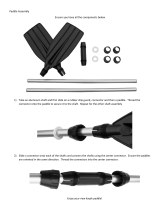 Emsco 1087-1 Operating instructions
Emsco 1087-1 Operating instructions
-
ALEKO PBS03-HD Operating instructions
-
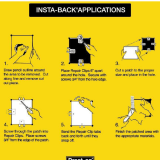 Prest-on 4045 Operating instructions
Prest-on 4045 Operating instructions
-
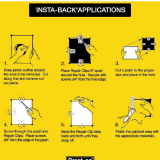 Prest-on 4040 Operating instructions
Prest-on 4040 Operating instructions
-
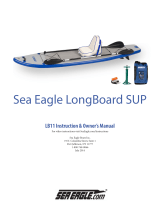 Sea Eagle Boats LongBoard SUP LB11 Instruction & Owner's Manual
Sea Eagle Boats LongBoard SUP LB11 Instruction & Owner's Manual
-
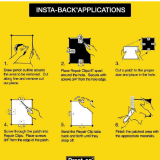 Insta-back 4060 Operating instructions
Insta-back 4060 Operating instructions
-
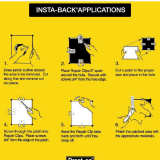 Insta-back 4055 Operating instructions
Insta-back 4055 Operating instructions
-
FlowerHouse SHMD766 Operating instructions
-
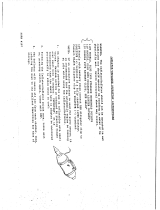 MetroVac DIDA-1 User manual
MetroVac DIDA-1 User manual
-
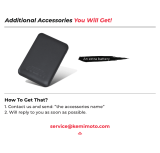 kemimoto H0107-00101BK4XL-XL User manual
kemimoto H0107-00101BK4XL-XL User manual




















